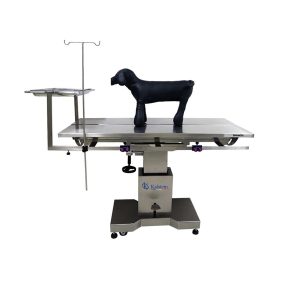As medical science advances, the field of veterinary medicine also continually progresses. A crucial aspect of this progression is the preparation and setup of a veterinary operating table, which significantly contributes to the success of any surgical procedure. Its preparation may vary depending on the type of surgery, whether it’s an emergency or planned, or the size and species of the animal. This article will explain how to effectively set up a veterinary operating table for different types of surgery.
Selecting the Right Equipment
Every veterinary operation begins with the selection of the right equipment, which includes the surgical table, anesthesia equipment, surgical instruments, sutures, and other medical devices. The veterinarian must ensure all the equipment is in perfect condition before the surgery and that there are spares available in case of an emergency. For instance, for a neutering or spaying surgery, sharp scalpels, sutures, and suitable anesthesia instruments will be required.
Ensuring the Animal’s Comfort and Safety
Once the equipment is selected, it’s essential to place the animal on the operating table so that its comfort and safety are ensured. Veterinarians should use absorbent safety straps to prevent the animal from sliding during the operation. Moreover, it’s crucial to consider the species and size of the animal. Larger animals may require larger operating tables or additional support cushions to ensure their comfort during surgery.
Preparation of the Surgical Area
The next step is the preparation of the surgical area. This involves cleaning and disinfecting the skin around the area where the incision will be made, and also preparing additional sterile surgical equipment that will be needed. Following a series of steps methodically is vital to minimize the risk of infection.
Management of Surgical Waste
Finally, it’s essential to set up an efficient system for managing surgical waste. This includes having suitable containers for disposing of needles and other surgical materials, as well as plans for handling bodily fluids and removed tissues.
The correct setup of a veterinary operating table can make the difference between a successful procedure and one that presents complications. Therefore, it’s essential that veterinary staff are well-trained and aware of the best practices for establishing a safe and effective surgical environment. No matter the nature of the surgery: with proper preparation, every animal can receive the high-quality care it deserves.

